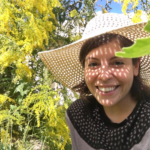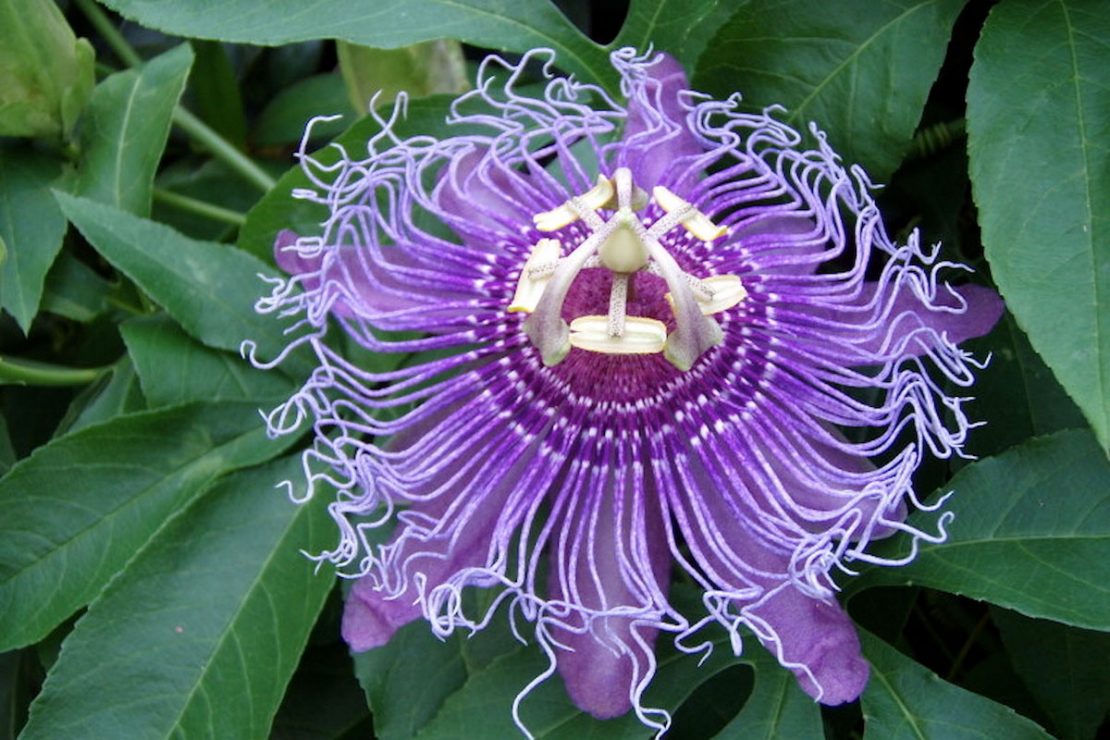
Vining Herbs: Take Gardening to New Heights
Vining plants do so much for a garden. Vertical climbing plants take up minimal ground space and add height and texture to the garden scape. They will hide unsightly garden walls or become a whimsical focal point when grown on an arched trellis or pergola. Trellised vining plants grown on porches and patios can provide a privacy screen or shade for outside seating areas. Vining herbs make a flourish in the garden and, if you choose the right plants, they can also be a helpful addition to your home apothecary.
How to Grow Vining Herbs
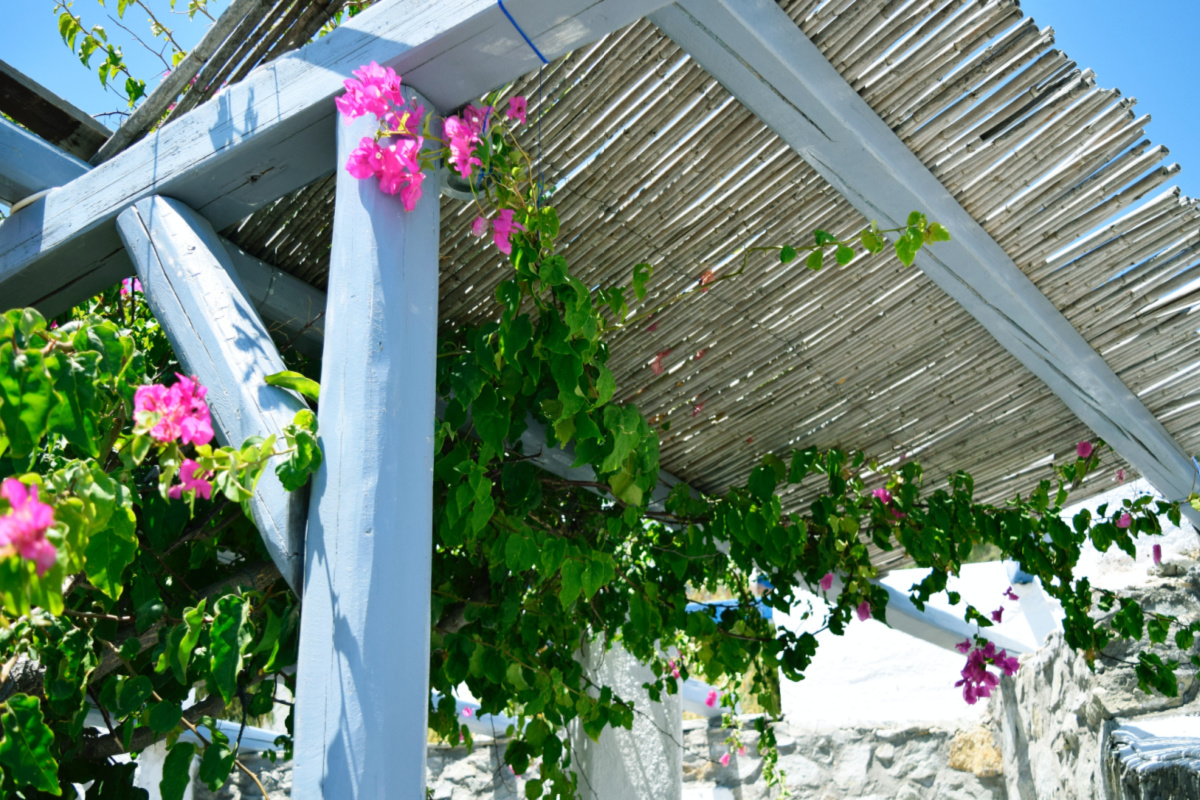
Pick a Place
When choosing a vining herb, be sure to consider whether or not the plant is a good fit for your garden based on the United States Department of Agriculture (USDA) plant hardiness zone in which you live. (Don’t know your hardiness zone? Look it up here, and then compare it to the recommended hardiness zone on the back of your plant’s seed packet or plant tag. This research will help ensure you don’t try growing a tropical plant in a cold climate and vise versa.)
After choosing a compatible plant, check the plant’s light requirements and select an appropriate spot on your garden plot. If a plant prefers full sun, for example, then try planting it on a south-facing wall. As the vines ascend structures, like a tower, archway, or pergola, keep in mind that they will create shade for the surrounding plants at various times of day.
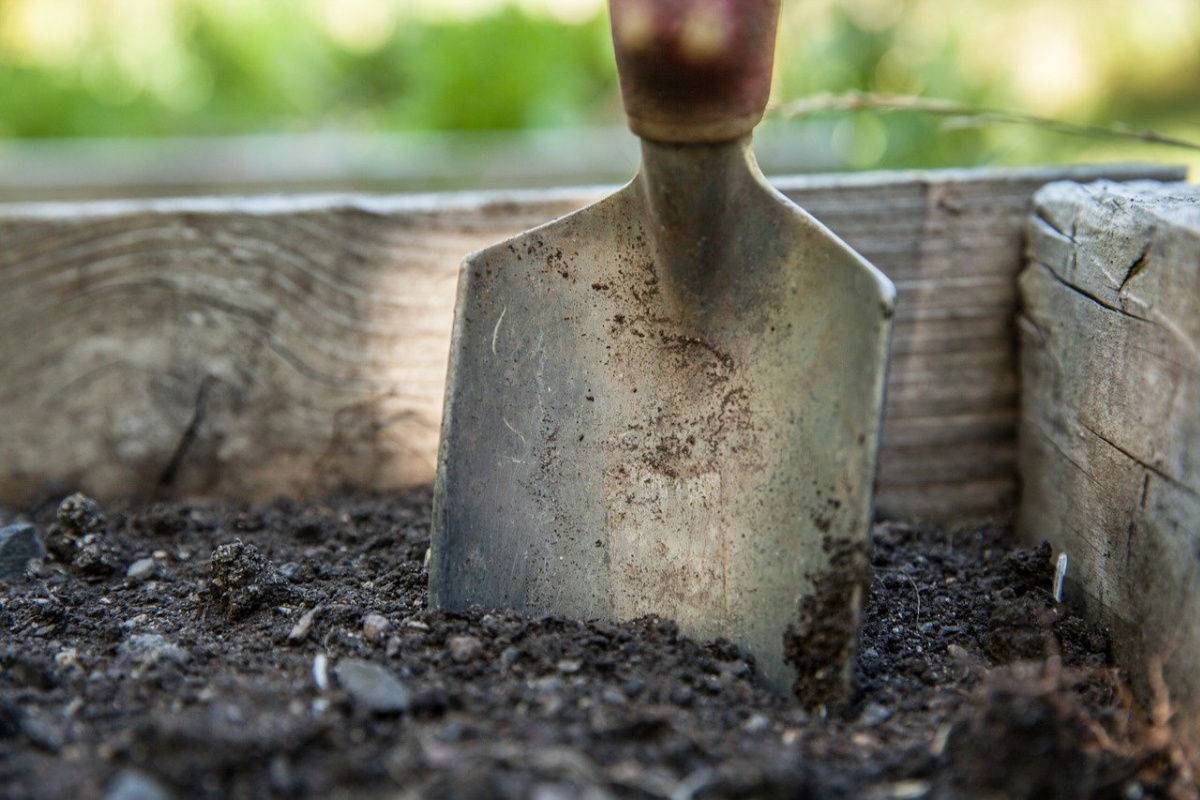
Prepare the Space
Now that you’ve found the right plant for the right spot, verify that you can provide the right soil conditions. Make any necessary amendments to the existing soil where you plan to plant your vining herb. Soil amendment will vary based on what the plant you choose needs. You can increase the amount of soil drainage for a plant by amending the soil with sand, and to increase humus add finished compost or leaf litter. Also, consider your selected plant’s watering requirements to see that it is compatible with neighboring plants’ watering needs.
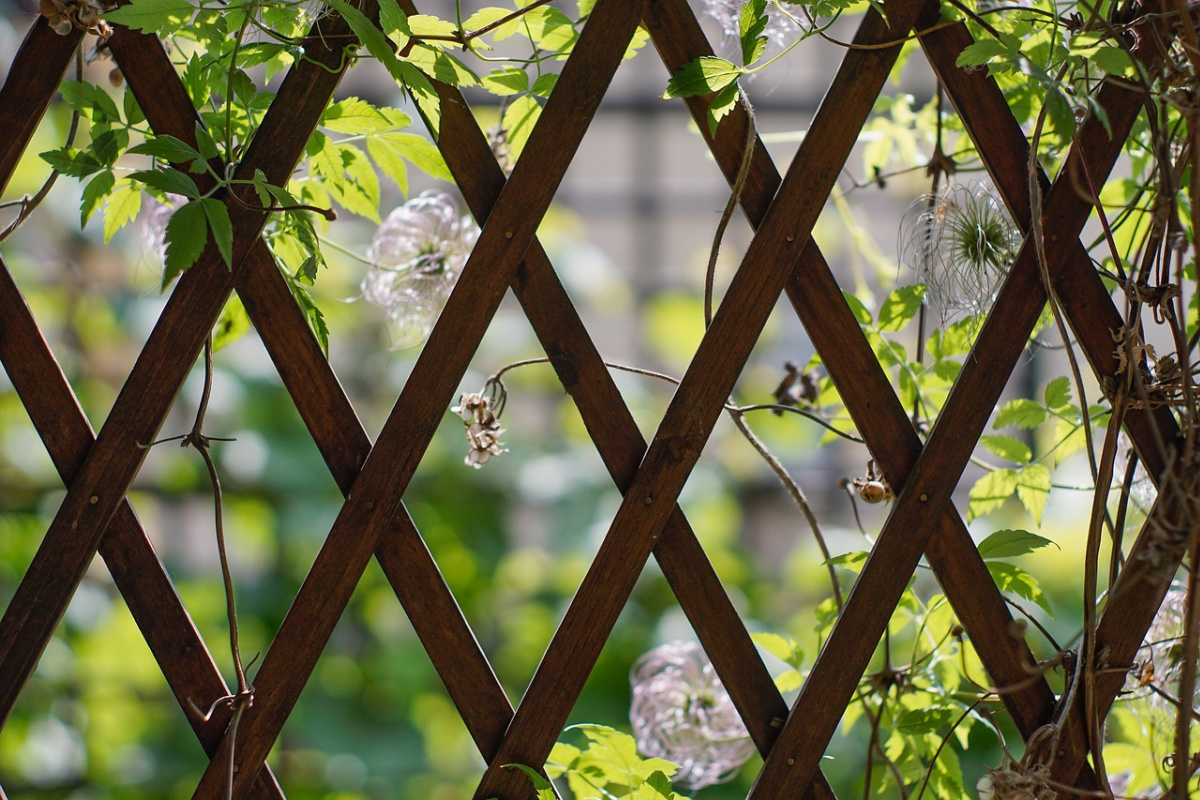
Support
Finally, consider what you will use to support the climb of your vertically vining herbs. If you plan on having your vine climb up your garden wall, then will it be able to climb the wall on its own, or will it need the help of a trellis? Consider how you will secure and stabilize the support structure in the ground or to the wall.
Use stakes to anchor a trellis by pounding the stakes into the ground and then fastening the trellis to the stakes with wire. Another method is to dig a small trench and bury part of the trellis in the ground while wedging it up against a supporting wall.
When selecting a teepee brace or garden tower to train your climber, ensure it is strong enough to support the plant’s growth and any fruits. Anchor it securely in the ground using stakes or digging down into the ground to bury part of the structure.
3 Beautiful Vining Herbs
There are many vining herbal allies to choose from for your garden. Next, we will cover how to grow and use three that will be stunning to the senses and relaxing to the mind.
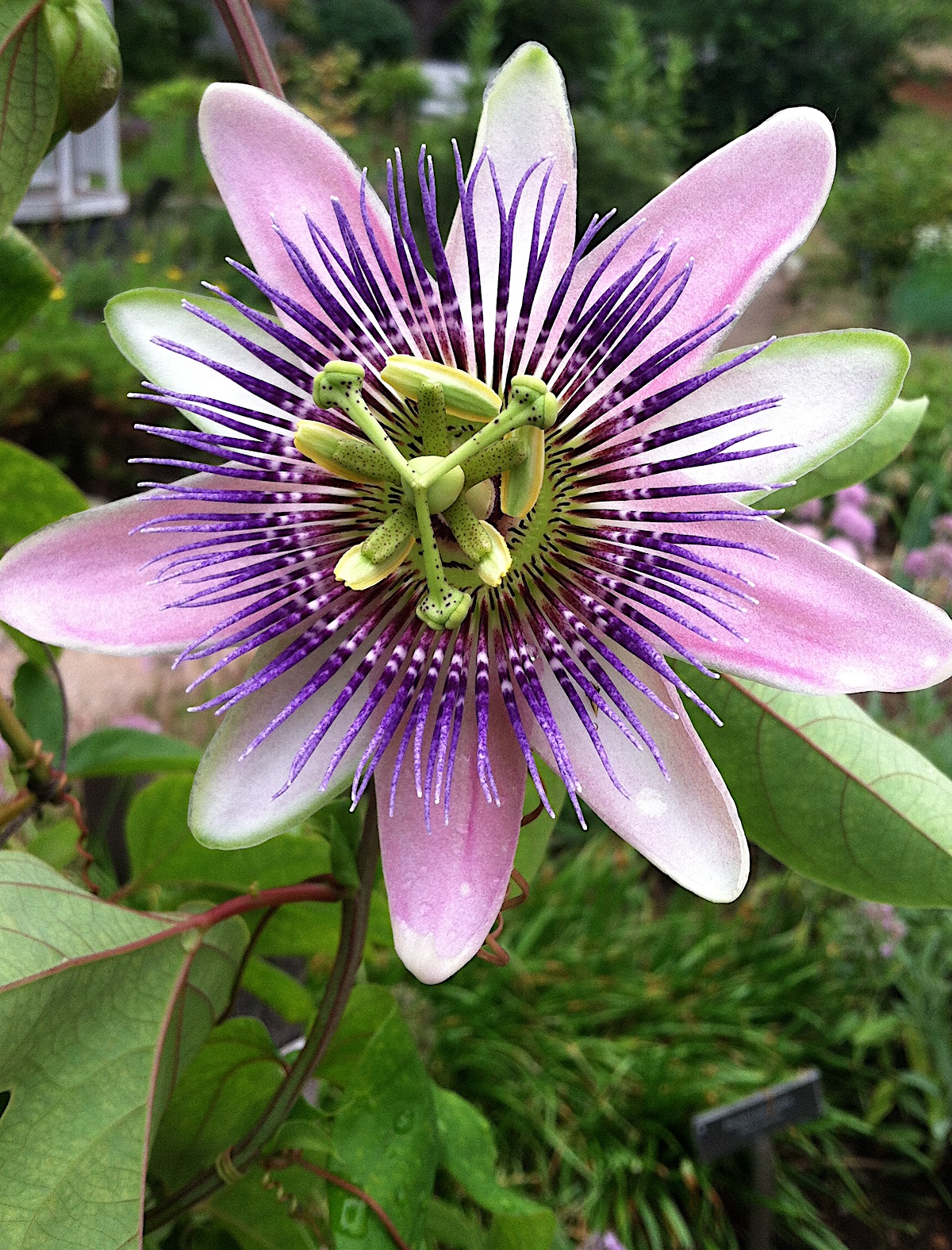
Passionflower (Passiflora incarnata)
The passionflower vine (Passiflora incarnata) is an herbaceous perennial that grows well from USDA hardiness zones 5-11 (USDA, n.d.; USDA, 2012). The purple passionflower also goes by the common names maypop and apricot vine (Hartung, 2011). Propagating passionflower from seed is difficult, and germination rates are low. It’s much easier to purchase a starter plant to get this exotic beauty into your garden.
Plant your passionflower vine in a place where it will get shade for a good portion of the day. Passionflower needs a humus-rich soil, a moderate to high amount of water, and at least two feet of space between each vine. This vine’s tender herbaceous nature means that it doesn’t need heavy-duty support and will be fine growing up a simple trellis or fence. The quick growth rate and 8-foot sprawl make passionflower a smart choice for covering larger spaces like a wall, an archway, or a pergola.
This plant climbs using tendrils, which curl around the supporting structure and hoist the plant upwards. Passionflower will require training. (Training is when a gardener assists the plant in directing its growth to the support.) To do this, gently lead the young vines to the climbing apparatus. Wind or weave them so that the tendrils can sense the structure. The tendrils should set in a day. Tenderly train your vine every day or so until the plant knows which way to go.
The flowers of this plant are extremely unique and exotic. The lavender and white blooms appear from mid to late summer, and the fruits follow the flower. Passionflower fruit resembles a green apricot in size, shape, and outer texture (Hartung, 2011). These delicious fruits can be eaten raw or made into jellies or sorbets.
Harvest the plant’s aerial portions, including the flowers, throughout the growing season (Hartung, 2011). The flowers only last a day or two each, so don’t wait too long, or else they’ll fade. Fortunately, passionflower shares an abundance of new blooms throughout the growing season.
Passionflower has anti-inflammatory and antispasmodic actions in the body. Herbalists traditionally use passionflower when creating sedative and restorative teas, tinctures, syrups, or honeys for the nervous system (Hoffmann, 2003).
Passionflower is an excellent ally for those who suffer sleepless nights and restless minds. It helps to ease the body into a restful sleep without a groggy hangover the next day.
Passionflower may potentiate the effects of sedative drugs or substances, like alcohol, and is therefore contraindicated for people who take monoamine oxidase inhibitors (Hoffmann, 2003).
Learn more about this lovely vining herb in 7 Things You May Not Know About Passionflower.
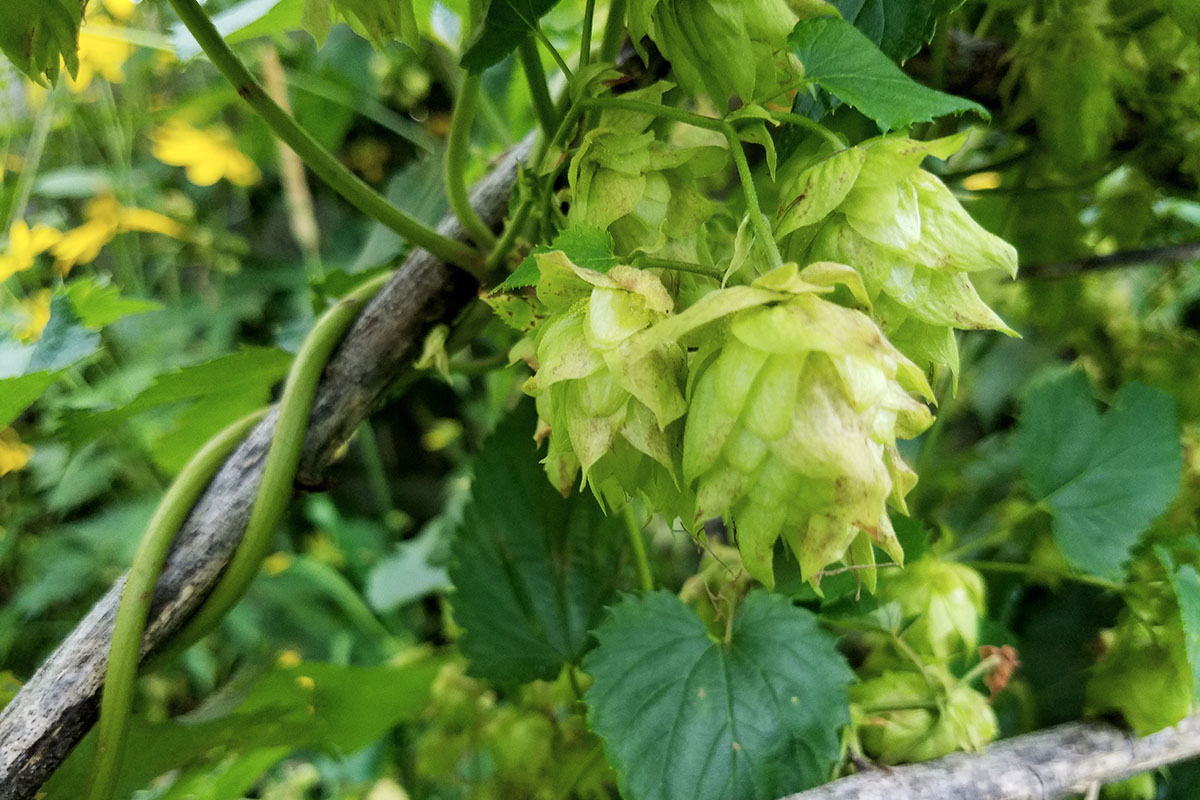
Hops (Humulus lupulus)
Hops have been used as a preservative in beer since the fourteenth century due to their antimicrobial power. Their bitter taste has even become synonymous with the brew (Grieves, 1931). The same aromatics that have beer brewers and drinkers spellbound by their taste are also responsible for the sedative and antispasmodic effects that hops has on our body. Simply smelling hops soothes the worried mind and eases restlessness, insomnia, or headaches caused by tension (Hoffmann, 2003).
Hops do well in hardiness zones 4-8 (Hartung, 2011). Cuttings or suckers are rooted for propagation, but starting this plant from seed is difficult. Hops are dioecious, meaning they have specifically male and female plants, rather than having both reproductive functions in the same flower on every plant. When purchasing a starter, select a female for the production of flowers. The male plant is only necessary if you want to fertilize the female flowers to produce seeds (Grieves, 1931). Otherwise, the lady is fine all on her own.
Choose a place in your garden that gets full sun or partial shade over the course of the day. Hops prefer rooting into a rich soil, but will tolerate less than ideal soil conditions. If planting several hops together, give them 6 to 8 feet of distance in between. Water regularly, a moderate to heavy amount, to keep up with the growth of this vining herb (Hartung, 2011).
Hops spreads through runners and will also root when stems touch the ground. This vigor means that your hops plant will need good support, like a strong fence, a wall, or a structurally secure trellis to climb (Hartung, 2011). Its abundant foliage and flowers make it an excellent choice for creating privacy or an impressively textured backdrop for your garden.
This plant will send up new vines every year. At the end of the growing season, the vines will start to fade as the plant’s energy shifts into the roots for hibernation. Prune old vines as the plant begins to fade in the cooler months. End of season pruning ensures the structure is free and the plant unencumbered by old growth when the new shoots emerge in spring.
The hops plant’s green paper lantern flowers appear during the summer and grow increasingly abundant through the hotter months (Hartung, 2011). Use the flowers, called strobiles, in herbal preparation. The bitter flavor of hops is a deterrent for some when ingesting this herb. Luckily, you can also achieve the desired sedative effect by placing your head on an herbal pillow stuffed with hops or by soaking your feet in an infusion of hops.
Hops can do wonders for calming the mind, easing anxiety and tension in the body. Owing to its sedative nature, hops does have the potential to increase the effects of any other sedative therapy or substance. It is not recommended that you use hops if you have a tendency toward depression or have been diagnosed with depression (Hoffmann, 2003). Hops are potent and effective as an analgesic and sleep aid, so use care when consuming.
Learn more about hops (and download a Free Hops Monograph!) in The Lure and Lore of Hops. If you’re interested in brewing your own beer with homegrown hops and other herbs, then don’t miss the Craft of Herbal Fermentation Course.
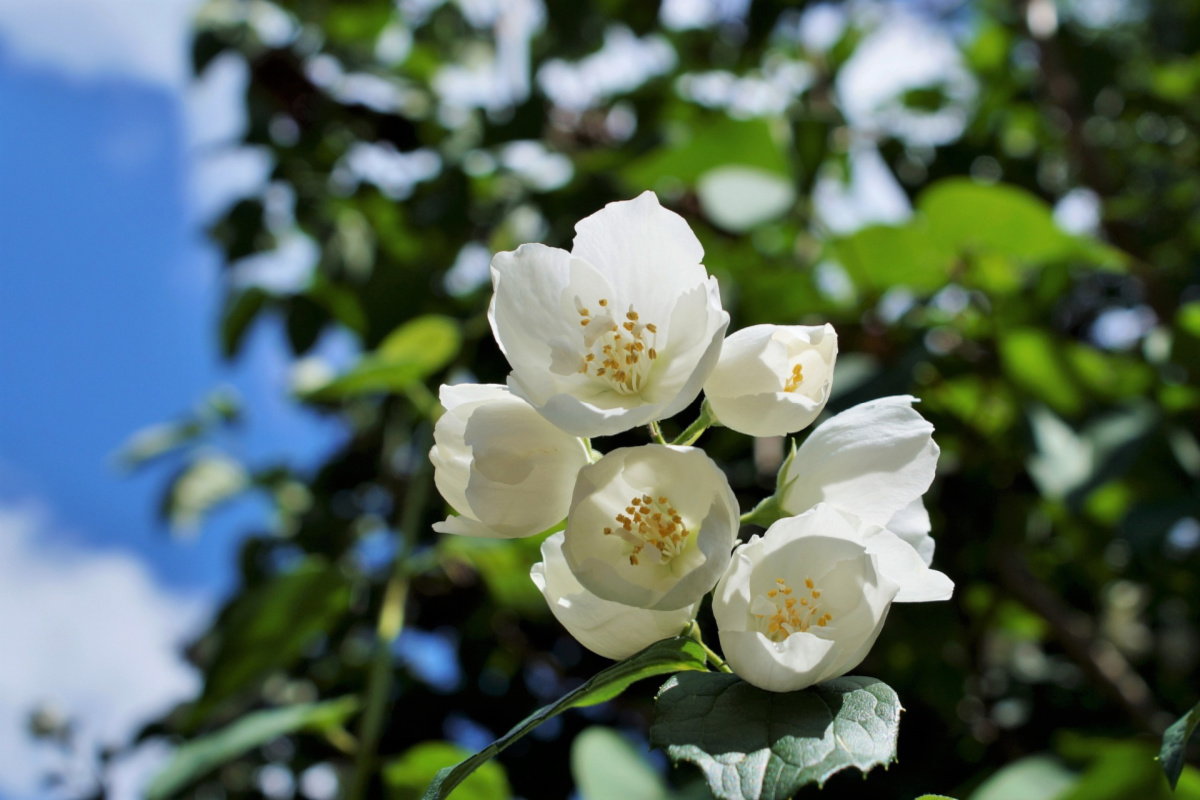
Jasmine (Jasminum officinale)
Jasmine is another wonderfully aromatic vining herb for your garden. This plant lives well in USDA hardiness zones 7-10, with full sun to partial shade. This plant wants moist, well-draining soil (North Carolina State Extension, n.d.). Water moderately on a regular schedule.
The best method for propagating jasmine is to root a cutting from an already established plant (Gardeners World Magazine, 2020). If you don’t have access to a jasmine plant that you can take a cutting from, buy a starter. Starters are available in a range of sizes, so it is even possible to move a more mature plant into your garden. Larger plants cost more, and transplanting may be more difficult on plants that are already more established.
Like hops, jasmine is a twining climber. Instead of using tendrils to reach and cling, as passionflowers do, twining vines wrap their shoots around their support to make the journey upwards. Twining vines need the sturdy support of a beam, wall, or shade structure to support their weight, but they coil too tightly to attach to the larger beams right from the start. At first, the shoots need something slim to wrap around so that they can start their climb (Sunset, 2004).
Train the shoots of a twining vine to a larger structure using wire (Sunset, 2004). If you want to train jasmine up the large beam of a pergola or shade structure, attach a wire to an eye hook at the top of the beam, wind the wire around the beam all the way to the ground, and secure it at the bottom. Leave enough slack in the wire that the shoots will be able to wrap themselves around it. Help your twining vine grow up a wall by anchoring eye hooks spaced 6-8 inches apart along the top and bottom of the fence. Then, run wire vertically down the fence, attaching to the eye hooks on the top and bottom for secure support.
A mature jasmine vine can create a shaded canopy in just one season when grown over a pergola or shade structure. After flowering, the plant will go into a resting phase. During this resting phase, prune the plant to control and encourage growth (Missouri Botanical Garden, n.d.).
Lovely white flowers appear in the summer, and the fragrance will perfume every breeze that passes. One jasmine plant can easily perfume the whole garden. These ambrosial blooms attract pollinators, including hummingbirds and butterflies, to the garden (North Carolina State Extension, n.d.).
Jasmine’s scent is simultaneously calming and uplifting. The oil, used in aromatherapy, has both antidepressant and relaxing effects on the mind and body (Chevallier, 2000). Use the flowers in tea blends, herbal soaks, herbal honeys, liniments, and lotions. Jasmine is a prime candidate for the historic perfume-making technique called “enfleurage” that you can learn more about here or in the Natural Perfumery Course.
In Closing,
There are many vining herbs to choose from that can add layers and textures to your backyard scape. Choose the right plant for your garden’s environment, give it a good structure, and it will flourish. These vertical beauties take your gardening to new heights.
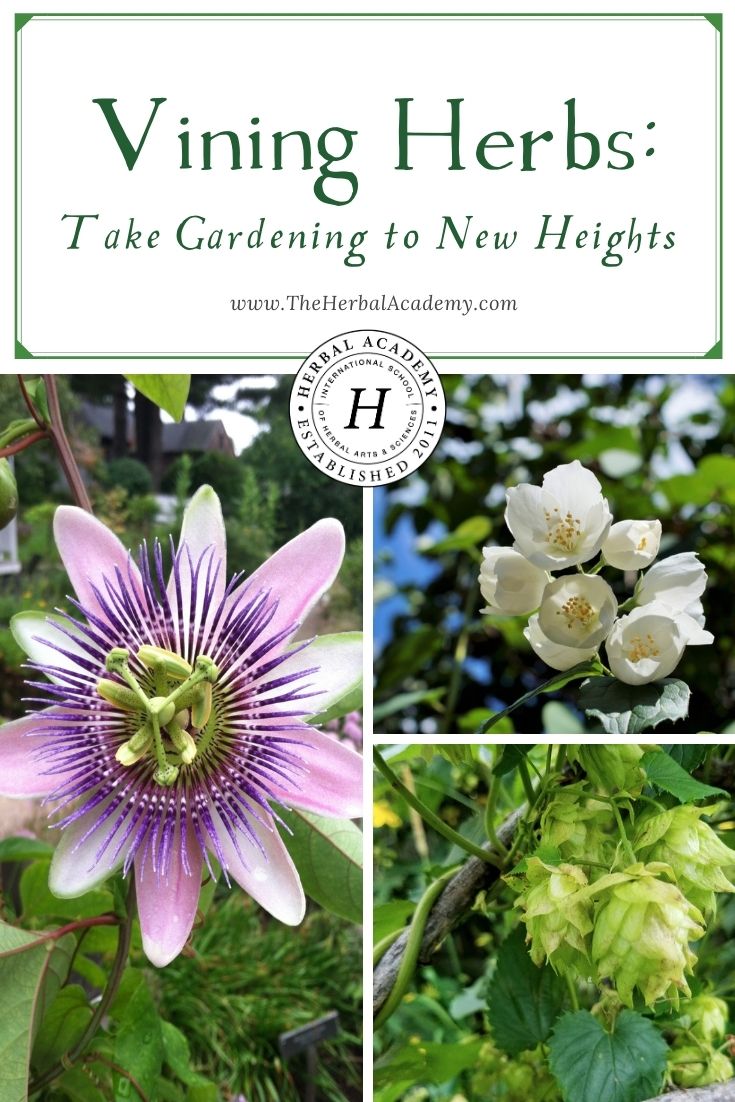
REFERENCES
Chevallier, A. (2000) Encyclopedia of herbal medicine: The definitive reference to 550 herbs and remedies for common ailments (2nd ed.). New York, NY: DK Publishing, Inc.
Gardeners World Magazine. (2020). How to grow jasmine [Blog]. The British Broadcasting Corporation. Retrieved from https://www.gardenersworld.com/how-to/grow-plants/how-to-grow-jasmine/
Grieves, M. (1931). A modern herbal. Retrieved from https://www.botanical.com/botanical/mgmh/mgmh.html
Hartung, T. (2011). Homegrown herbs: A complete guide to growing, using and enjoying more than 100 herbs. North Adams, MA: Storey Publishing
Hoffmann, D. (2003). Medical herbalism: The science and practice of herbal medicine. Rochester, VT: Healing Arts Press.
Missouri Botanical Garden. (n.d.). Jasmine officinale [Website]. Retrieved from http://www.missouribotanicalgarden.org/PlantFinder/PlantFinderDetails.aspx?kempercode=b559#:~:text=Winter%20hardy%20to%20zones%207,growers%20and%20most%20require%20support
North Carolina State Extension. (n.d.). Jasmine officinale [Website]. North Carolina State University. Retrieved from https://plants.ces.ncsu.edu/plants/jasminum-officinale/#:~:text=Jasminum%20officinale%20is%20an%20evergreen,is%20drought%20and%20pollution%20tolerant.
Sunset. (2004). How vines climb. Retrieved from https://www.sunset.com/garden/garden-basics/how-vines-climb
United States Department of Agriculture. (2012). [USDA plant hardiness zone map]. Agricultural Research Service. Retrieved from https://planthardiness.ars.usda.gov/PHZMWeb/
United States Department of Agriculture. (n.d.). [Passiflora incarnata native range map]. Natural Resources Conservation Service. Retrieved from https://plants.usda.gov/core/profile?symbol=PAIN6

